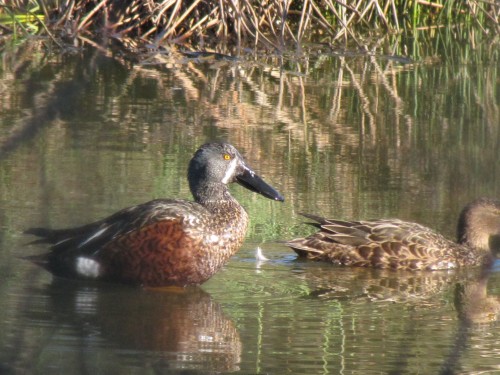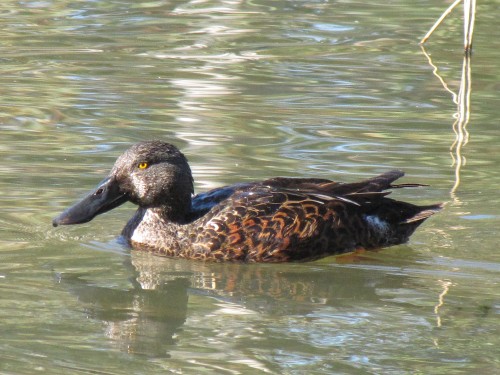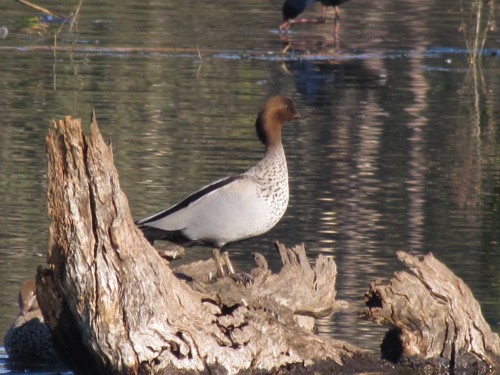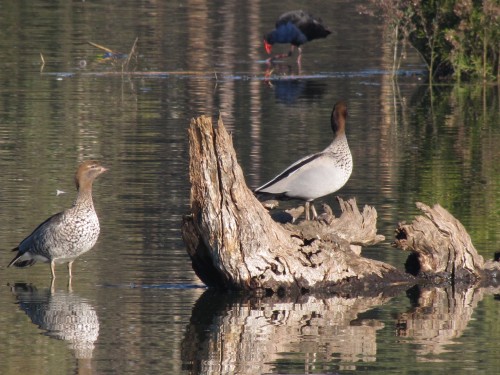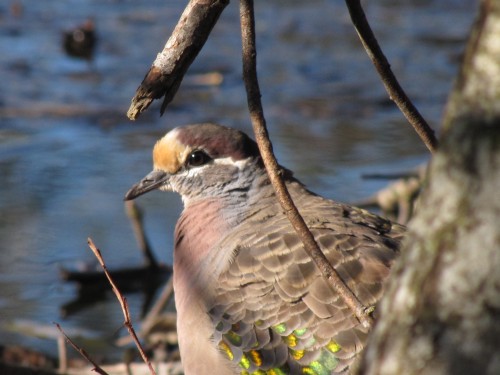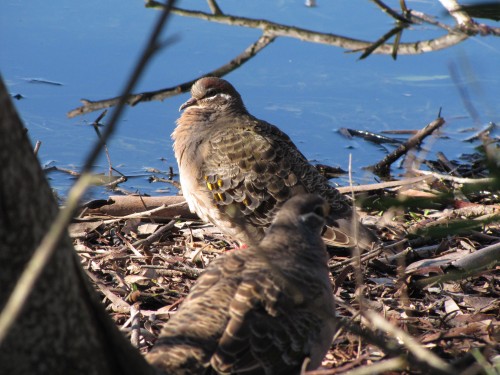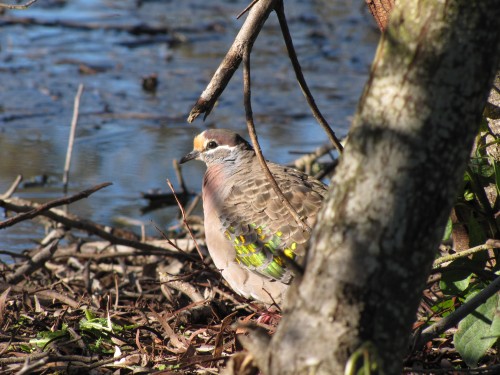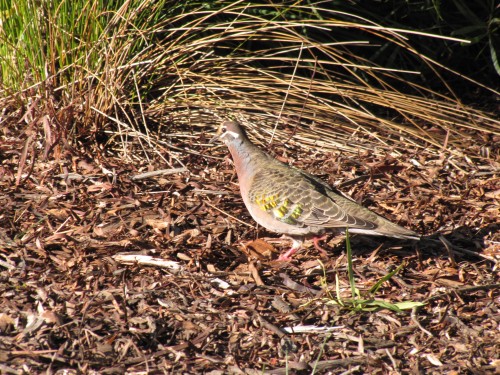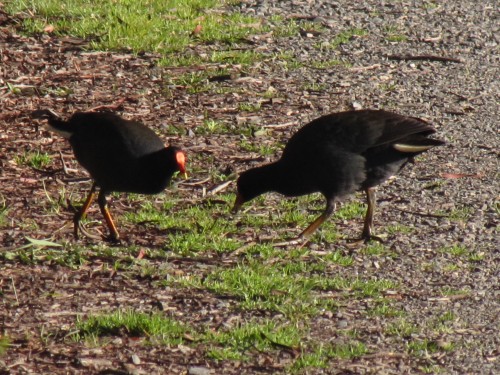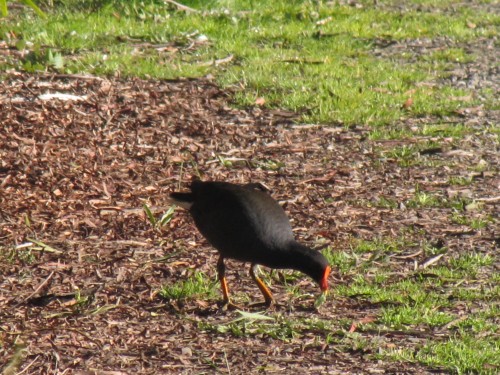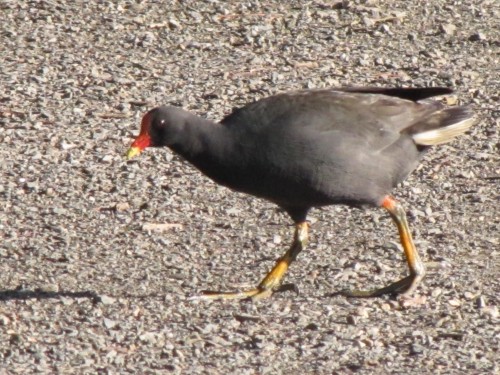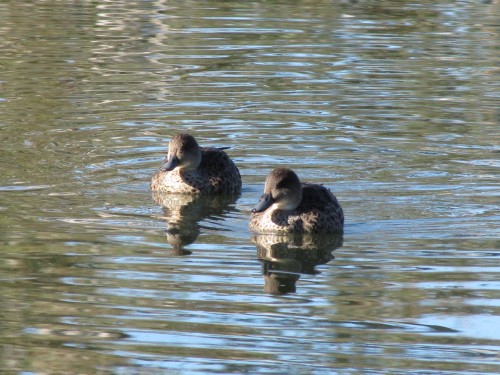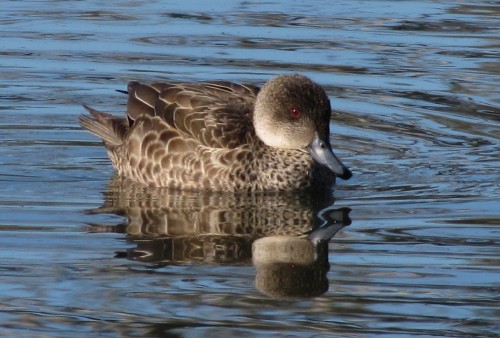Southern Shoveller, Laratinga Wetlands
Several months ago now I visited the Laratinga Wetlands for the morning. I have written a number of articles here over recent weeks about that visit, showing photos of the birds seen in most of those articles. These wetlands consist of about a dozen artificial ponds on the eastern edge of Mt Barker in the Adelaide Hills, South Australia. This are about a half hour drive south-east of Adelaide, as well as just over a half hour drive west from my home in Murray Bridge. The ponds are actually the sewage works and storm water drainage for the town of Mt Barker. The purified water is later recycled for irrigation on nearby farms.
The wetlands are a wonderful haven for water birds, including ducks, cormorants, ibis, swamphens, coots, grebes, plovers, egrets, herons, reed-warblers and more. The surrounding landscaped picnic areas are also a haven for many bush birds such as honeyeaters, parrots, lorikeets, wrens, pigeons, bronzewings, hawks, kites, falcons, flycatchers and more.
On this most recent visit I took several photos of a male and female Southern Shoveller. Several of these photos are marred by branches or twigs in the way and the only reasonable one is that shown above. Also known as the Australasian Shoveller, this duck is found in suitable habitat throughout the eastern half of Australia, including Tasmania as well as south western parts of Western Australia. It is a species I have not seen all that often, and on those few occasions I have seen it, I usually only see a couple or a small group, never in large numbers.
I have included another photo below. This is of an eclipse plumage bird and was taken last year in one of the wetland areas of the Western Plains Zoo at Dubbo, New South Wales.
Further reading:
Australian Wood Ducks Laratinga Wetlands
The Australian Wood Duck is one of the more common duck species here in Australia. Wherever there are bodies of water such as ponds, lakes, rivers, dams, swamps and wetlands one can often see pairs or small flocks of this species. On many occasions the number can be many dozens up to loose flocks of hundreds if the habitat is suitable.
This species is not restricted to water however. They will also be found far from water, feeding on pastures, grasslands, sports fields and parks. They can be found throughout much of Australia except the extreme drier regions in central Australia.
In the photo below, the female is on the left while the male is on the right. A Purple Swamphen can be seen in the background. The photos were taken at the Laratinga Wetlands near Mt Barker in the Adelaide Hills of South Australia.
Further reading:
Beautiful Bronzewing Pigeons
Common Bronzewing Pigeons are, on first appearance, a reasonably plain bird. It is only when one gets an individual sitting quietly in a sunny position that you get a full appreciation of the subtle and quite beautiful colours in the plumage of this species. This is what happened to me recently on a visit to the Laratinga Wetlands in Mt Barker, South Australia. I seem to recall seeing at least three birds on that visit; there may have been more that I didn’t see.
In my experience Common Bronzewings are very flighty, nervous birds and will fly off rapidly as you approach. This can make them sometimes hard to photograph in the bush. At Laratinga they have obviously become accustomed to the hundreds of local people and tourists who visit this site every day. Walkers, joggers, photographers and cyclists frequently use the many good paths around the dozen or so ponds making up the wetlands, so it is not surprising that the local bronzewings will tolerate a person coming to within a few metres.
The birds in today’s photos were only about three metres from me so I was able to get some close up shots. The early morning sun shining on their feathers shows off some of the beautiful colours.
Further reading:
- Laratinga wetlands – articles from my archives
- Bronzewing Pigeons at the Australian Reptile Park
- Flock Bronzewing Pigeon
- Speeding Bronzewing Pigeon
Dusky Moorhens at Laratinga Wetlands
Over recent posts here on my site I have featured some of the birds I saw and photographed on a recent visit to the Laratinga Wetlands in Mt Barker, South Australia. As I have stated before, this is one of my favourite birding places to visit because of the large number and variety of birds present all year on the dozen or so ponds which make up the wetlands. Besides, it is about a half hour drive from my home.
Apart from the ease of getting there, and the good variety of birds, another benefit is being able to access the various ponds via a great network of walking paths. These paths are used daily by hundreds of locals and visitors for walking, running, cycling and birding. From the paths visitors have a great view of the birdlife and this makes photography a delight there. On many occasions the paths themselves afford good photographic opportunities.
A example of this on my most recent visit was a small flock of Red-browed Finches drinking from some puddles on the path. Unfortunately the puddles were in deep shade, and the birds constantly moving, so my shots of them turned out very blurry. You get that.
On the other hand, today’s photos feature several Dusky Moorhens feeding on the grassy verges of one of the paths – and in full sunlight. It made it a little easier to get some photos, but on the downside, they were a little skittish.
Dusky Moorhens are often found near bodies of water like the Laratinga Wetlands and often associate with both Purple Swamphens and Eurasian Coots. They found throughout the eastern half of the Australian mainland as well as SW Western Australia and Tasmania.
Further reading:
Cruising Grey Teals, Laratinga Wetlands
A few days ago I featured a Pacific Black Duck I saw at the Laratinga Wetlands in Mt Barker.
Today it is the turn of another common species, the Grey Teal.
This great birding site is just over half an hour’s drive from my home in Murray Bridge here in South Australia. I don’t get to visit often enough. I know of birders who visit this place almost every day. The birding is usually very good with many opportunities for bird photography.
The ponds making up these wetlands have wide tracks along their edges and many locals and visitors use these tracks on a daily basis for walking, cycling and jogging. The adjacent picnic grounds are also very well set out and maintained.
On a recent visit I took these photos of some Grey Teal cruising along across one of the ponds. Many birders and photographers probably overlook this common species. It can be found in many parts of Australia wherever bodies of water exist.
I have seen lakes where there were thousands of these ducks. Just because they are common does not mean that they cannot be photographic. I like the photo above, but the one below is something special, in my opinion. The photo has only been cropped a little and has not been enhanced in any other way.
For more photos and further reading about the birds of Laratinga, click here.
Good birding.
Trevor
